
Can you really find fish by tracking seabirds using radar? The answer is yes, and the practice is certainly nothing new. Christopher Columbus encountered frigate birds as soon as he sailed past the Cape Verde islands in 1492 during his first voyage across the Atlantic. Also called man-of-war birds in the Caribbean by English sailors, these majestic airborne hunters are capable of soaring on the winds for weeks, helping them to be excellent locators of fish. They aren't the only ones though; among many other species are countless varieties of terns, gannets, boobies, shearwaters and gulls, and all can point us to better fishing, depending on where we are and what our target species is.
NEWER IS BETTER
Myths and legends of using seabirds to find fish, predict weather and even help sailors navigate along various sea routes run deep in many cultures. Seabirds are most often following bait that's being driven up to the surface of the ocean by actively feeding predators, or the scraps that float up for the birds to reach. When you can see them working, either with the naked eye or through a good pair of binoculars, that's great. If not, it's time to use the power of radar to your advantage.
Diese Geschichte stammt aus der March 2023-Ausgabe von Marlin.
Starten Sie Ihre 7-tägige kostenlose Testversion von Magzter GOLD, um auf Tausende kuratierte Premium-Storys sowie über 8.000 Zeitschriften und Zeitungen zuzugreifen.
Bereits Abonnent ? Anmelden
Diese Geschichte stammt aus der March 2023-Ausgabe von Marlin.
Starten Sie Ihre 7-tägige kostenlose Testversion von Magzter GOLD, um auf Tausende kuratierte Premium-Storys sowie über 8.000 Zeitschriften und Zeitungen zuzugreifen.
Bereits Abonnent? Anmelden

TOURNAMENT SEASON IS HERE
Time to gear up for your favorite events
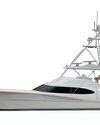
BAYLISS 76
The second project for a current Bayliss owner is in the initial phases of construction at Bayliss Boatworks in Wanchese, North Carolina.

POINTS OF NEGOTIATION IN FOREIGN CONSTRUCTION CONTRACTS
Be sure to understand the details when building a vessel in another country
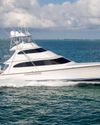
MERRITT 88
A unique skybridge design from a world-famous boatbuilder

BIG BLUES AND BIG MONEY IN BERMUDA TRIPLE CROWN
Who will take home the coveted title of champion team this summer?

INSTRUCTOR SPOTLIGHT: BRAD GOODRICH & CHARLES PERRY
New school meets old school when it comes to proper angling training
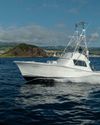
RETURN OF DOUBLE HEADER
The rebirth of a classic sport-fisher amid one of the most prolific destinations for big blue marlin
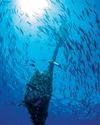
THE SCIENCE OF FADS
An in-depth look at what makes these fish attractors so effective
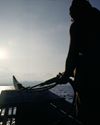
ARMED AND DANGEROUS
In a day when piracy on the high seas still exists, traveling with firearms on board remains not only a personal choice but a safety issue as well
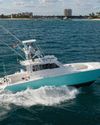
JIMMY'S DREAM
The planning and design of a new Merritt lost shaker of salt included catamaran,